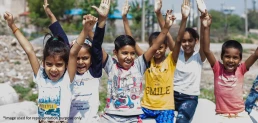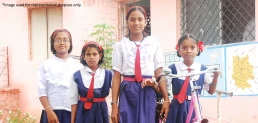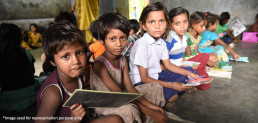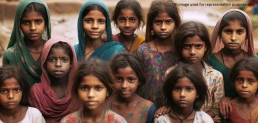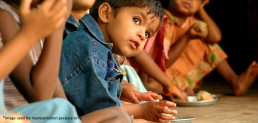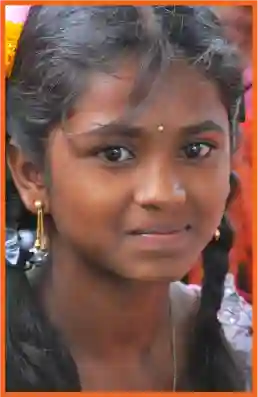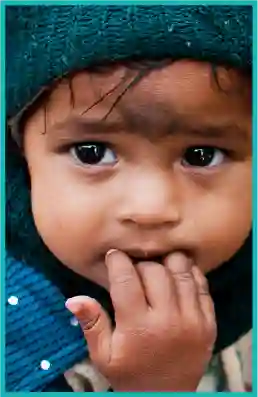Importance of skill-based education for empowering underprivileged children
Developing countries often rely heavily on traditional education, children primarily engage in rote learning and theoretical knowledge. While these aspects are important, they don’t always prepare children for real-world challenges. This is where skill-based education plays a significant role in shaping these children’s futures. By providing life skills, we can help them build a foundation for personal growth and economic independence.
In today’s blog, let’s explore the importance of skill-based learning, the key components of life skills, and the role of governments and NGOs in promoting skill-based education in marginalized areas.
Also Read: Equity in Education
What is skill-based education?
Skill-based education emphasizes the development of practical and applicable skills that go beyond textbooks. It focuses on real-world competencies such as communication, teamwork, critical thinking, problem-solving, and technical skills that are essential in helping children adapt to challenges and excel in various aspects of life.
Importance of skill-based education
1. Bridging the learning gap: Underprivileged children often face disrupted career paths due to low-income levels and frequent dropouts from mainstream schooling. Skill development programs, such as vocational training, life-skill sessions, computer literacy, and language skills, offer practical education and hands-on training, bridging this educational gap and making them more employable.
2. Encourages informed decisions with critical thinking: Skills such as problem-solving, financial literacy, and effective communication empower underprivileged children to think critically and make informed decisions paving the way to independent living.
3. Fosters confidence and self-esteem: Dreams and aspirations can only flourish when individuals possess skills, they are confident in applying. This confidence comes from education, knowledge, and hands-on training. Skill-based learning fosters resilience and helps children envision a brighter future for themselves.
4. Ensures child protection: Skill development programs offer underprivileged children an alternative to child labor and early marriage by teaching marketable skills. These programs build their capacity for future employment, protecting them from exploitation and the consequences of child marriage by guiding them toward dignified and empowering roles in the workforce.
5. Teaches adaptability: Skill-based education equips children with versatile skills that can be applied in various scenarios. Whether it’s learning digital skills, communication techniques, or vocational trades, these skills ensure that children can thrive even when faced with uncertainty.
Key components of life skills education
Due to disrupted learning, education often becomes easier to acquire when life skills act as complementary learning for underprivileged children. Some of the most important life skills for students include:
- Communication skills: The ability to express thoughts clearly, both verbally and in writing. Effective communication helps children advocate for themselves and connect with others.
- Critical thinking and problem-solving: Teaching children how to think critically and solve problems independently equips them to handle real-world challenges.
- Financial literacy: Understanding the basics of budgeting, saving, and managing money can help children make informed financial decisions.
- Vocational skills: Skills like carpentry, driving, kitchen gardening, tailoring, or computer literacy can open up job opportunities for children who may not have access to higher education.
- Teamwork and collaboration: Learning to work with others helps children develop social skills and succeed in group settings, whether in school, learning centers, or their communities.
Role of government and NGOs to drive skill-based education
Governments and NGOs act as powerful mediums to facilitate and provide access to skill-based learning. Together, they create scalable initiatives to reach underserved communities worldwide.
Role of government: Governments worldwide are increasingly acknowledging skill development initiatives as key tools for reducing poverty and promoting economic growth. With programs like Pradhan Mantri Kaushal Vikas Yojana (PMKVY), an initiative aimed at offering short-term skill development courses in areas such as construction, healthcare, and IT, the government of India is continuously working to empower its youth.
Role of NGOs: While government programs exist, NGOs ensure that marginalized communities are aware of and have access to these government programs. According to a 2024 Press Release from the Press Information Bureau, 1.42 crore individuals have participated in the PMKVY program, with the participation of women increasing from 42.7% in 2016 to 52.3% in 2024. Besides this, ways an NGO can contribute to skill-based learning include:
- Workshops and training programs: Offering practical workshops that teach vocational and digital skills.
- Community engagement: Working with families and communities to emphasize the importance of skill-based education.
- Mentorship programs: Providing role models from the community and mentors who guide children through their educational journeys.
Also Read: Impact of Non Profit Organizations on Empowering Children
CRY America’s role in skill development for students
CRY America’s education-focused projects support underprivileged children by providing them with practical skills through life skills education, empowering them to become self-reliant and build a better future. Some of the key initiatives of CRY America’s projects include:
- Linking children and adolescents with government programs: Ensures access to skill-based government programs for marginalized families by raising awareness and helping them avail the benefits of such programs.
- Child Activity Centers: Fosters life skill sessions that encourage children to think critically, communicate to express their views, and participate in group activities with informed decisions.
- Vocational training: Conducts vocational training in areas such as digital literacy, driving, tailoring, and gardening, ensuring sustainable employment opportunities in underserved areas.
- Sports coaching: An effective initiative, CRY America’s projects focusing on education, sometimes offer sports coaching to teach children discipline, and perseverance, besides learning the sport. This helps children focus on their studies while developing practical skills on the field.
CRY America making a difference with skill-based education
While working with project Doaba Vikas Evam Utthan Samiti (DVEUS) in Uttar Pradesh, the team came across a girl who dropped out of school after 2nd standard due to her family's financial struggles. Her family's low income and the long distance to school forced her to put her education on hold.
With CRY America’s intervention, her mother was counseled on the importance of education, and she was enrolled in CRY's Child Activity Center to attend bridge classes. She was then re-enrolled in 3rd standard by the project team, and now, she aspires to become a police officer.
Conclusion
Imparting skill-based education is important for the overall development of children. For example, digital literacy has come a long way, thanks to the efforts of government programs, and NGOs like CRY America, which ties all the efforts of attaining skill-based education into one thread. While India has made notable progress over the last decade in fostering skill-based education, the journey is far from over. It is achievable with the continuous support of government efforts, NGO drives, and your unwavering support.
By supporting CRY America, you can make a direct difference in the lives of underprivileged children by empowering them with skill-based education. Donate today and become a beacon of hope for a better tomorrow.
The role of education in empowering the girl child: Breaking barriers to equality
Educating girls has the power to uplift entire communities. By supporting a girl child's education, we help them break free from the chains of poverty and outdated mindsets. The World Bank’s Girl Education Report 2020 highlights that if all girls complete secondary education by 2030, it could boost the average GDP of developing countries by 10% over the next decade. When a girl is equipped with the tools and skills to overcome inequality, she makes a profound impact, shaping brighter futures for families, communities, and the nation.
This article delves into understanding the importance of girl child education, and the advantages we attract by educating girls.
Also Read: Protecting Marginalized Girls
Why is girl child education important?
India has made noteworthy progress in raising the status of girls through education, scholarship programs, and gender-neutral parenting. However, much effort is still needed, which can open doors of opportunity, leading the whole nation to prosper and break the cycle of poverty.
A girl with access to education is healthier, independent, and contributes positively to her community. Thus, she becomes an agent of change, advocating for better health and nutrition and protecting children from the risks of child labor and child marriage.
Also Read: Educational Problems Faced by Girls in Remote Areas of India
8 advantages of girl child education
An educated girl creates a ripple effect of progress and equality through her choices and decision-making, which uplifts her family and her entire community. Here are the top 8 advantages of girl child education:
1. Financial independence
An educated girl seeks better job opportunities by working harder, enabling her to break free from the cycle of poverty and become a financially independent contributor, influencing her community.
2. Healthier communities
Educated women are better equipped to make informed health decisions, resulting in healthier families and communities. When a girl’s financial independence is secured through education, the next thing she prioritizes is vaccination, nutrition, and hygiene for her children.
3. Improved literacy rates
When we invest in the education of girls, they advocate for education within their family and the community they live in, thus significantly impacting literacy rates.
4. Self-confidence
Education fosters confidence by equipping girls with knowledge and life skills. This self-assurance helps them stand up against discrimination and advocate for their rights, fighting against child labor and early marriages.
5. Social mobility
Girls with access to quality education can overcome societal barriers, climb the social ladder, and break the stigmas that impact the health, nutrition, and education of children and women in the community.
6. Long-term economic growth
Educated girls advocate beyond households, transcending communities and uplifting the nation as a whole with sustainable, long-term economic goals.
7. Prevents exploitation
A girl child, whether subjected to child labor or forced into child marriage, is often exposed to exploitation both outside and within her family walls. Educating girls empowers them to protect themselves from such exploitation by equipping them with the knowledge and awareness to recognize and resist abuse.
8. Promotes equality in marriage
When educated girls grow up and decide to marry, they have the choice to make informed decisions rather than being pushed into marriage due to poverty. Educated women are more likely to enter equitable marriages, fostering mutual respect and shared decision-making.
Also Read: Rural Education NGO
How CRY America empowers girl child with quality education?
- Enrolling out-of-school and dropout children: Identifying and enrolling out-of-school girls and re-enrolling dropouts through initiatives like community involvement, parental counseling, children’s collectives, and awareness campaigns.
- Enhancing infrastructure and facilities: Working with local communities, school committees, and administrators to improve school infrastructure, ensuring access to safe classrooms, clean drinking water, and hygienic toilets to encourage regular attendance and academic success.
- Connecting children with education programs: Facilitating access to government education and scholarship programs to help children stay in school and complete their education. Supporting families with employment opportunities and linking them to government schemes like MGNREGA to ensure financial stability and reduce dependency on child labor.
- Training teachers and building skills: Providing teacher training programs that incorporate modern, interactive teaching methods to create inclusive and student-friendly learning environments.
- Offering support classes: Establishing learning centers to assist children who face academic challenges or have dropped out, helping them return and complete their education.
- Addressing girl child labor and child marriage: Conducting initiatives to eradicate girl child labor and early marriages through parental counseling and ensuring children receive education and essential support.
Also Read: Impact of Non Profit Organization on Empowering Children
CRY America empowering communities with girl child education
While working with project Mitwa Mahila Kalyan Evam Seva Samiti (MMKSS) in Chhattisgarh, CRY America encountered a girl facing immense challenges in continuing her education after her father's death. The project team intervened and met her mother, who shared that it was no longer possible to support her daughter’s private school education due to her limited income.
The team counseled the mother to transfer her daughter from a private to a government school to ensure she could sustain and complete her education. They facilitated the transition by addressing the issue of unpaid fees and securing a transfer certificate.
The 12-year-old girl successfully enrolled in her new school and now attends classes regularly, inspiring others in her community to prioritize education.
Also Read: Youth Empowerment Through Education
Conclusion
Over the last two decades, India has made significant progress in advancing girl child education. While the journey has been challenging for a nation with immense diversity and a large population, various programs and integrated efforts have facilitated access to education for girls. However, while much has been achieved, there is still a long way to go to fully empower girls and break the vicious cycle of poverty.
As we take small but impactful steps toward change, your generous support provides the courage and resources needed to create a profound impact together.
Also Read: Equity in Education
Overcoming barriers to education for underprivileged children
Access to education is a fundamental right. But millions of children worldwide, especially those from underprivileged backgrounds, are often deprived of it. Education opens doors to better opportunities, breaks the cycle of poverty, and fosters community progress. However, several barriers prevent children from realizing this right. UNESCO’s Out-of-school Children and Youth Global report estimates that 258 million children and youth were out of school in 2018, representing one-sixth of the global population.
In this article, let’s delve into understanding the importance of education for children, the root causes hindering access to education, and sustainable ways through which we can ensure education for children.
Also Read: Barriers to Education
Importance of quality education for underprivileged children
Education goes beyond literacy - it is a gateway to sustainable learning, essential skills, and personal growth. Here’s how education impacts the lives of the children.
- Social inequalities: Quality education empowers children with critical thinking skills and access to better jobs, healthier lifestyles, and improved community engagement.
- Consequences of poverty: Without access to education, children are more likely to fall into poverty, face early marriage, child labor, and experience reduced earning potential.
- Health protection: When a child is educated, they have the potential to break unhealthy traditions that impact the health of their families and the larger community.
Also Read: From Child Labour To Future Scientist
Barriers to quality education for underprivileged children
Even 14 years after the enactment of the Right of Children to Free and Compulsory Education Act, 2009 (RTE Act-2009) in India, many children are still not attending school. Many children remain out of school at the elementary level, while others drop out at the secondary level due to the below reasons.
- Financial barriers: Children are often forced to work to support their families, compromising their education in the process.
- Social and cultural barriers: Gender discrimination may prevent girls from attending school. Additionally, some cultural practices in marginalized communities may prioritize work over education, believing that more hands-on work than reading books will yield more income.
- Lack of infrastructure: Many schools lack essential facilities such as classrooms, washrooms, clean drinking water, and electricity. In India, particularly in rural areas, the absence of well-equipped schools close to children’s homes adds to dropout rates.
- Shortage of trained teachers: Under-resourced schools often lack qualified teachers, resulting in substandard education affecting learning outcomes.
- Language and curriculum barriers: For children from diverse linguistic backgrounds, especially tribal communities, language can be a significant barrier. When the medium of education does not align with their native language, they get demotivated and drop out of school.
Also Read: Online Safety for Children
Steps taken to eradicate barriers to education
Governments, Non-Profits, and global organizations have undertaken initiatives to address these barriers:
- Free and compulsory education policies: Many countries, including India, have introduced free and compulsory education policies. The Right to Education Act (RTE) in India mandates free and compulsory education for children aged 6-14 years.
- Scholarship programs: Numerous scholarships and financial aid programs have been created to help underprivileged children access education. Scholarships specifically targeting girls, rural children, and those from marginalized backgrounds are making a significant difference in shaping the futures of underprivileged children.
- School feeding programs: Organizations and governments worldwide have implemented school feeding programs that help alleviate hunger, improve attendance, and reduce dropout rates.
- Infrastructure development: NGOs along with the local administration are continuously working towards infrastructure development with a focus on building safe, accessible schools and providing facilities such as washrooms, drinking water, and electricity.
- Teacher training programs: Various teacher training programs are conducted by self-help groups and NGO projects focusing on equipping educators with skills to handle diverse classroom environments and provide inclusive education.
Also Read: Barriers to Education
How CRY is working towards quality education?
CRY America’s projects are dedicated to protecting and promoting the rights of underprivileged children. Here’s how CRY America’s projects are making an impact:
- Enrolling out-of-school and dropout children: CRY actively works to identify, enroll out-of-school children, and re-enroll dropped-out children through community engagement, parental counseling, formation of children collectives, and awareness drives.
- Building infrastructure and facilities: CRY America’s project teams engage with local communities, administration, and school committees to improve school infrastructure. They ensure that children have access to safe classrooms, clean drinking water, and hygienic toilet facilities, which are essential for regular attendance and academic success.
- Linking children with education programs: CRY America’s multiple projects educate children and parents on government programs and support them to avail it to continue their education.
- Teacher training and skill development: CRY America’s projects empower teachers through training programs by adapting modern interactive teaching techniques to help them create inclusive, student-friendly environments.
- Organizing support classes: Children in need of educational support, whether due to academic struggles or previous dropout status, receive support through bridge or remedial classes provided by CRY America’s projects.
- Spreading educational empowerment through CRY America projects
While working with project Jawahar Jyoti Bal Vikas Kendra (JJBVK) in Bihar, CRY America encountered a young girl whose parents were daily wage earners. Due to financial constraints, she had to stay home to care for her siblings and manage household chores, causing her to neglect her studies.
Recognizing her need for support, the project team enrolled her in the Bridge Course Center, where she was taught the basics of reading, writing, and numeracy. However, having been out of touch with studies for a long time, she initially struggled to concentrate in class. To address this challenge, they adapted modern teaching techniques such as videos, presentations, and interactive activities to rekindle her interest in learning.
Her renewed enthusiasm and passion for education led her to achieve first-division marks. Today, she is a confident and active member of JJBVK’s children’s collective advocating for children’s education rights.
Also Read: Protect Underserved Children
Conclusion
Overcoming the barriers to education for underprivileged children requires a multifaceted approach involving government policies, community engagement, and your invaluable support. By supporting CRY America, you can directly help children pave the way to quality education.
Donate now to make a real impact on the lives of countless children, making access to education a reality for every child.
Child marriage: Achievements, gaps and challenges
Child marriage remains a pervasive issue across the globe, impacting millions of girls and pushing families into a vicious cycle of poverty. According to child marriage statistics 2023 progress report by UNICEF, an estimated 640 million girls worldwide were married as children. This practice is alarmingly high in regions such as South Asia and Sub-Saharan Africa, where cultural norms, economic hardships & social pressures drive families to marry off their daughters at an early age.
India, home to high numbers of child marriages globally, accounts for one-third of the world’s child brides. Although India has made significant efforts to reduce child marriage through numerous initiatives, there remains a lot to be done. This article delves into understanding what is child marriage by exploring its causes & consequences, the progress made & the challenges that remain.
What is child marriage?
Child marriage is the act of marrying a person, either formally or informally, below the legal age of 18. This practice profoundly impacts the lives of young girls, who are often forced into marriage due to socio-economic pressures, cultural beliefs, and gender inequality. It deprives children of their childhoods and exposes them to lifelong disadvantages, including health risks, limited educational opportunities & increased vulnerability to abuse.
Also read: What is child marriage
Causes of child marriage
Several factors contribute to child marriage. Here are some key ones:
- Low-income levels: Families with low incomes may feel compelled to marry off daughters to alleviate financial burdens.
- Societal traditions & cultural beliefs: Some communities uphold traditions that view marriage as an act of securing a girl’s future.
- Lack of education: A lack of awareness & access to education among families increases the likelihood of child marriage, as uneducated girls are often seen as financial burdens.
- Gendered parenting: In many communities, sons are prioritized over daughters, pushing families to see marriage as a way to reduce the financial “burden” of raising a girl.
Consequences of child marriage
Child marriage has far-reaching consequences, including:
- Educational impact: Early marriage disrupts education, limiting a girl’s potential for financial independence & personal growth.
- Health risks: Child brides face early pregnancies, which carry the risk of higher maternal & infant mortality rates.
- Poverty: Child marriage leads to an indefinite loop of poverty as it limits access to education & economic opportunities.
Also Read: Child Marriage in India
Achievements: Progress made to reduce child marriage
India has made considerable progress in reducing child marriage through various reforms. Harvard School of Public Health’s child marriage statistics indicates that girl child marriage in India has decreased from 49% in 1993 to 22% in 2021, while boy child marriage declined from 7% in 2006 to 2% in 2021.
Some key achievements include:
- Legislation: The Prohibition of Child Marriage Act (2006) criminalizes child marriage, with provisions for penalties & annulment.
- Government programs: Initiatives like Beti Bachao Beti Padhao empower & educate girls, with programs for women that they can only access at the legal marriage age.
- Increased awareness: Awareness programs have shifted public perceptions, making more communities aware of the harm caused by child marriage and the need to end child marriage.
Also Read: Forced Child Marriage
Gaps and challenges in preventing child marriage
Despite progress, significant gaps & challenges remain:
- Loopholes in child marriage law: The Prohibition of Child Marriage Act needs amendment to declare all child marriages null & void. Currently, only forced marriages are void & child marriages remain valid unless annulled./li>
- Poor implementation: Enforcement is inconsistent, especially in rural areas where authorities face limited resources or community opposition.
- Inadequate government programs: Existing programs focus indirectly on child marriage through girl child development, often insufficient in patriarchal societies. Programs need to address child marriage directly & protect girls seeking education or employment./li>
- Social acceptance: In some regions, child marriage remains culturally accepted, complicating enforcement./li>
- Financial burden: Marrying off a daughter is often seen as financial relief for low-income families./li>
- Education barriers: A lack of education among families, coupled with limited access to quality education for girls, increases vulnerability to early marriage.
CRY America’s efforts to reduce child marriage
CRY America’s initiatives have made an impact and created a difference in the lives of children, which has successfully stopped 2,722 child marriages through multiple efforts. Some key initiatives include:
- Adolescent girls’ collectives: CRY America forms collectives to educate communities & children about the ill effects & illegal nature of child marriage.
- Awareness campaigns: Community awareness campaigns targeting families & children.
- Linking people to government programs: Connecting communities & children with existing government programs to empower them through education.
CRY America’s role towards child marriage prevention
While working with the project Kalapandhari Magas Vargiya and Adivasi Gramin Vikash Sanstha (KMAGVS) in Maharashtra, CRY America came across a girl who was forced to drop out of school in the 9th standard and get married early due to her family’s financial constraints.
The girl was a member of KMAGVS's children's collective, and she was counselled by the team to participate in community radio broadcasts on Akashvani, organized by the project team. Gaining confidence and support from the project members, she began advocating for girls' education and sharing her views with her community. The team also counselled her parents on the value of education, and they were eventually convinced to cancel her early marriage and re-enroll her in school.
The 16-year-old girl went on to excel in her 10th board exams, securing the first rank in her school
Also read: What is child marriage
Conclusion
The fight against child marriage in India has seen significant progress, but the journey is far from over. CRY America continues to work on breaking down the cultural, financial, and social stigmas that perpetuate child marriage.
By supporting CRY America, you can directly help protect children from the consequences of child marriage. Donate now to create an impact on the lives of countless children, and let's end child marriage together.
What is malnutrition?
Malnutrition is a global health issue that affects millions of people, especially children. It is one of the leading causes of mortality in children under 6 years, contributing to stunted growth, developmental delays, and susceptibility to diseases. According to the 2024 WHO Report, 149 million children experience stunted growth due to malnutrition. The Global Hunger Index 2023 audit states that 8.57 crore Indian children under 6 years of age are malnourished, and 2.9% of Indian children die before their 5th birthday. Malnourished children face severe long-term health and developmental challenges which affect their childhood and adulthood.
This article covers understanding the types, causes, symptoms, and cures of malnutrition in children.
Also Read: Child Labor Laws and Regulations India
What is malnutrition?
Malnutrition refers to deficiencies, excesses, or imbalances in a person’s intake of energy or nutrients. The term covers 2 broad groups of conditions: undernutrition and overnutrition. Undernutrition includes stunting, wasting, and deficiencies in essential vitamins and minerals, while overnutrition refers to obesity or excessive intake of certain nutrients.
Malnutrition in children is a serious health condition that hinders both physical and cognitive growth. It often stems from the vicious cycle of poverty, where the undernourished condition of the mother directly impacts the newborn. Proper nutrition is critical in the early years of a child's life as it affects brain development, immune system strength, and long-term health.
1. Undernutrition
- Stunting: Children are too short for their age due to chronic undernutrition. It results from prolonged nutrient deficiency and is a major public health issue, especially in developing countries like India.
- Wasting: A child is too thin for their height, usually caused by acute malnutrition due to insufficient food intake or illness.
- Micronutrient deficiencies: A lack of essential vitamins and minerals like iron, vitamin A, iodine, and zinc can lead to health issues such as anemia, impaired immune function, and blindness.
2. Overnutrition
Overnutrition occurs when a child consumes more calories than their body requires, leading to obesity and related health problems such as diabetes and cardiovascular disease.
Causes of malnutrition in children
Malnutrition is preventable and treatable, especially when detected early through proper meal plans, healthcare access, and education about adequate nutrition.
- Poverty: Low-income families often lack access to adequate food, safe drinking water, and healthcare, making it difficult to provide children with the nutrients they need.
- Food insecurity: Instability in food supply due to conflict, natural disasters, or economic issues leads to malnutrition.
- Poor maternal health: Undernourished pregnant and lactating mothers are at risk of giving birth to low-weight and malnourished babies.
- Lack of education: Parents who are unaware of proper nutrition often provide an imbalanced diet, which contributes to malnutrition.
- Inadequate healthcare: Lack of access to medical treatment worsens malnutrition. Diseases such as diarrhea and infections, if untreated, exacerbate nutrient deficiencies.
- Infectious diseases: Illnesses like malaria and pneumonia reduce nutrient absorption & increase caloric needs, worsening malnutrition.
Signs of malnutrition in children
Identifying malnutrition early is challenging, but some common signs include:
- Stunted growth: Children shorter than expected for their age may suffer from chronic malnutrition.
- Thin & weak appearance: Wasted muscles & a gaunt appearance indicate acute malnutrition.
- Lethargy & fatigue: Malnourished children lack energy & are less active than their well-nourished peers.
- Frequent illness: Malnutrition weakens the immune system, making children prone to infections.
- Swelling: Children suffering from protein deficiency may have swollen bellies, ankles, or faces due to fluid retention.
- Behavioral changes: Irritability, unresponsiveness, or difficulty concentrating are behavioral signs of malnutrition.
Cures for malnutrition in children
Malnutrition is preventable and treatable, especially when detected early. Key solutions include:
- Nutritional interventions: Nutrient-dense foods such as fortified milk, cereals, and supplements can help children recover from malnutrition. Ready-to-use Therapeutic Foods (RUTF) are widely used to treat severe acute malnutrition.
- Healthcare access: Proper medical care, vaccinations, and deworming help treat diseases that worsen malnutrition.
- Education: Families need education on balanced diets, breastfeeding, and hygiene practices to prevent malnutrition. Community leaders, health workers, and schools can collaborate to spread awareness.
- Economic support: Social safety nets, employment opportunities, and economic aid help families afford nutritious food and healthcare for their children.
- Government programs: Linking communities to government schemes for healthcare and financial aid is an effective way to combat malnutrition.
How CRY America intervenes to combat malnutrition
CRY America plays a role in combating malnutrition by tackling the root causes of malnutrition & ensuring that children have access to resources they need for healthy development.
- Conducting nutrition awareness programs: CRY America educates communities about proper nutrition & healthcare practices through workshops and door-to-door visits. The team counsels parents on best practices to ensure a balanced diet & optimum child care.
- Providing sustainable nutritional support: Along with providing nutritional support to children, CRY America ensures sustainable methods to cure malnutrition. This includes referring malnourished children to the PHC & the Nutrition Rehabilitation Centers for treatment, starting & teaching kitchen gardening practices & following up with families during and after recovery.
- Linking to government programs: CRY America aims to empower communities by linking them to various government programs that help them take better care of their children.
- Facilitating healthcare access: Supported Projects teams facilitate healthcare by setting up health camps, providing medical check-ups, and ensuring children receive vaccinations and treatments that prevent malnutrition through Health Centers.
CRY America crafting a better tomorrow
While working with Project Vikas Samvaad Samiti (VSS) in Madhya Pradesh, CRY America encountered a family with a newborn suffering from being underweight and ill due to his mother’s poor nutrition. Deprived of vital colostrum, the baby’s condition remained dire for 6 months. The ASHA health workers encouraged his mother to admit him to a Nutrition Rehabilitation Center. After 11 days of treatment, the child gained weight and recovered from malnutrition. To help the family break the cycle of poverty, they were supported to start poultry farming & a kitchen garden to improve their nutrition & income.
Conclusion
Malnutrition is a critical issue that continues to affect millions of children globally, but it is preventable & treatable. Organizations like CRY play a significant role on this issue, helping to create a world where every child has the right to grow up healthy & strong.
By supporting CRY America, you can directly impact the lives of malnourished children, giving them a healthier and more secure future. Donate for children and be a beacon of hope for a brighter tomorrow.











